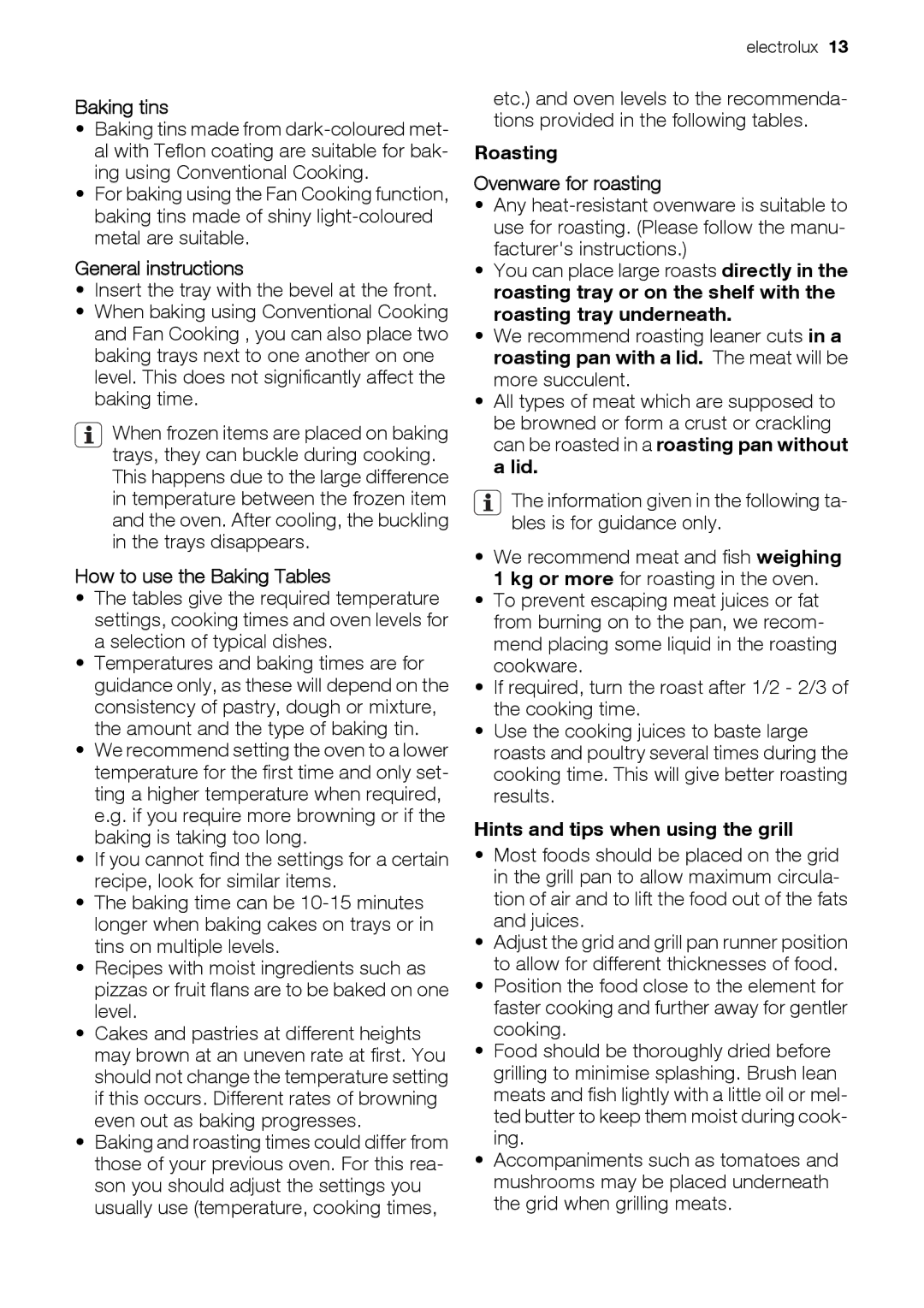Baking tins
•Baking tins made from
•For baking using the Fan Cooking function, baking tins made of shiny
General instructions
•Insert the tray with the bevel at the front.
•When baking using Conventional Cooking and Fan Cooking , you can also place two baking trays next to one another on one level. This does not significantly affect the baking time.
![]() When frozen items are placed on baking trays, they can buckle during cooking. This happens due to the large difference in temperature between the frozen item and the oven. After cooling, the buckling in the trays disappears.
When frozen items are placed on baking trays, they can buckle during cooking. This happens due to the large difference in temperature between the frozen item and the oven. After cooling, the buckling in the trays disappears.
How to use the Baking Tables
•The tables give the required temperature settings, cooking times and oven levels for a selection of typical dishes.
•Temperatures and baking times are for guidance only, as these will depend on the consistency of pastry, dough or mixture, the amount and the type of baking tin.
•We recommend setting the oven to a lower temperature for the first time and only set- ting a higher temperature when required, e.g. if you require more browning or if the baking is taking too long.
•If you cannot find the settings for a certain recipe, look for similar items.
•The baking time can be
•Recipes with moist ingredients such as pizzas or fruit flans are to be baked on one level.
•Cakes and pastries at different heights may brown at an uneven rate at first. You should not change the temperature setting if this occurs. Different rates of browning even out as baking progresses.
•Baking and roasting times could differ from those of your previous oven. For this rea- son you should adjust the settings you usually use (temperature, cooking times,
electrolux 13
etc.) and oven levels to the recommenda- tions provided in the following tables.
Roasting
Ovenware for roasting
•Any
•You can place large roasts directly in the roasting tray or on the shelf with the roasting tray underneath.
•We recommend roasting leaner cuts in a roasting pan with a lid. The meat will be more succulent.
•All types of meat which are supposed to be browned or form a crust or crackling can be roasted in a roasting pan without a lid.
![]() The information given in the following ta- bles is for guidance only.
The information given in the following ta- bles is for guidance only.
•We recommend meat and fish weighing 1 kg or more for roasting in the oven.
•To prevent escaping meat juices or fat from burning on to the pan, we recom- mend placing some liquid in the roasting cookware.
•If required, turn the roast after 1/2 - 2/3 of the cooking time.
•Use the cooking juices to baste large roasts and poultry several times during the cooking time. This will give better roasting results.
Hints and tips when using the grill
•Most foods should be placed on the grid in the grill pan to allow maximum circula- tion of air and to lift the food out of the fats and juices.
•Adjust the grid and grill pan runner position to allow for different thicknesses of food.
•Position the food close to the element for faster cooking and further away for gentler cooking.
•Food should be thoroughly dried before grilling to minimise splashing. Brush lean meats and fish lightly with a little oil or mel- ted butter to keep them moist during cook- ing.
•Accompaniments such as tomatoes and mushrooms may be placed underneath the grid when grilling meats.
